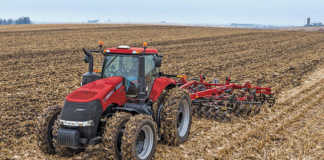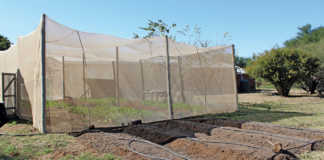
I couldn’t believe my eyes. Temperature records showed that the past month had been cooler than the same month last year. And here we were, telling each other how much warmer it had been.
We farmers, especially those of us who are a bit older, pride ourselves on expounding deeply insightful observations about the weather. Seldom am I in a group of farmers without hearing someone say, “We’ve never had rain before the end of July before, but …”, or, “Autumn winds are getting worse and worse. It never used to blow like this.”
Yet experience shows that human ability to reliably assess present and past weather conditions is notoriously erratic.
Apart from the fact that we live in one of the driest countries in the world and need to use water frugally, nothing affects the success of farming more than the weather. And with absolutely no ability to influence the weather, the best we can do is protect our crops and livestock from it.
But no farmer will ever do this effectively without accurate knowledge of what’s happening on the ground in the micro-climate of the farm. And believe you me, the decisions made to fine-tune crop management and provide the best possible growing environment cannot be left to one’s personal ‘weather sensors’ and judgement.
If measured carefully, it’s amazing how widely the micro-climate varies from place to place. North-facing slopes are warmer and drier; prevailing wind direction and intensity change from day to day and season to season; low-lying areas near dams and streams have higher humidity; and rainfall levels differ markedly from place to place.
The farmers who take these micro-climates into account, and adapt their production management accordingly, are the ones who produce record yields year after year.
A simple, affordable solution
So, what’s to be done? It’s hardly practical to install fully equipped weather stations with thermometers, anemometers, hygrometers (humidity sensors) and pyranometers (radiation sensors) all over your farm. They’re expensive, costly to manage, and a complex and time-consuming task to analyse.
A far better solution is the humble ‘evaporation pan’, developed more than 50 years ago and which seems to have been all but forgotten in our high-tech world.
Evaporation is affected by temperature, humidity, solar radiation and wind. It’s highest on hot, sunny, dry, windy days, and is reduced when clouds block the sun, and the air is calm and humid. Measuring evaporation provides the best possible way of obtaining some idea of what the crop is actually experiencing.
A common error of misjudgement is to schedule another round of irrigation after a hot, sweaty day in the lands. The pan, however, will often show that, under these conditions, evaporation has in fact been quite low.
The ambient temperature might have been high, but on a calm, windless day, with high humidity, evaporation is reduced. No extra irrigation is needed!
How it works
In my book, it should be mandatory for every farm manager, especially those making irrigation decisions, to have yesterday’s evaporation pan reading on hand before beginning the day’s work.
Take care, however. Evaporation pans must be properly constructed and managed to provide accurate and consistent readings.
The ‘Class A evaporation pan’, details of which are readily available on the Internet, is one of the most commonly used. It comprises a cylinder with a diameter of 121cm and a depth of 25cm. The pan rests on a carefully levelled wooden base and is often enclosed by a fence to prevent animals drinking from it.
You begin by filling the pan to exactly 5cm from the top. At the end of 24 hours, you simply measure the amount of water needed to refill the pan to exactly 5cm from its top.











